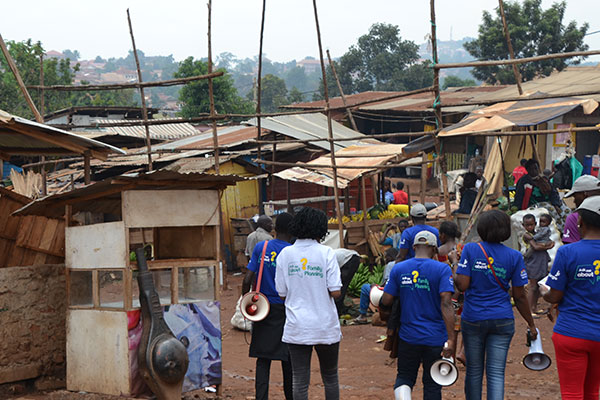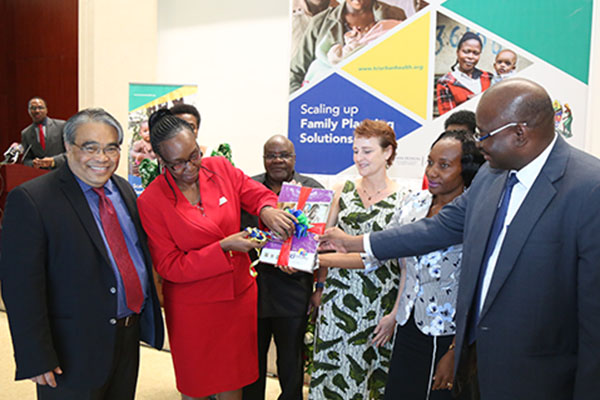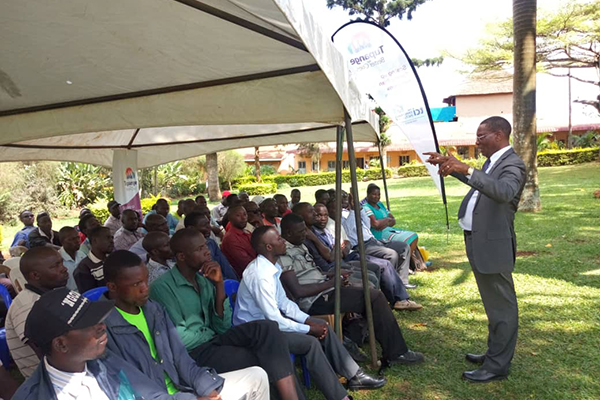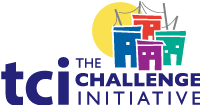East Africa Toolkit: Service & Supply
- Home
- Help and Support
- Close
- Toolkits
- Global Toolkit
- AYSRH Toolkit
- Hub Toolkits
- Core High-Impact Practices
- Gender Essentials Mini Course
- Close
- Resource Collection
- Community of Practice
- Coaching
- Log In/Register
- My Profile
- English
Health Facility Strengthening Through the 72-Hour Clinic Makeover
 The 72-hour clinic makeover is a collaborative effort between the local government, the communities that the facility serves and TCI to provide a conducive environment for family planning service provision to urban poor populations through renovations of facility infrastructure. This approach has been adapted from Nigeria, where the development of the 72-Hour Clinic Makeover originated.
The 72-hour clinic makeover is a collaborative effort between the local government, the communities that the facility serves and TCI to provide a conducive environment for family planning service provision to urban poor populations through renovations of facility infrastructure. This approach has been adapted from Nigeria, where the development of the 72-Hour Clinic Makeover originated.
Local community leadership works in tandem with the geography technical leadership to shortlist and select facilities for upgrade. This all-hands-in approach is existent from introducing the makeover concept to post-makeover. Facilities are prioritized based on existing and potential client volume, poor infrastructure especially in terms of lacking in comfortable waiting bays, audio and visual privacy, which often effects client volume and poor uptake of services including family planning services.
Cost sharing both in cash and in-kind between TCI and local government, was evidenced in majority of facilities that have undergone this approach.
The makeover process involves refurbishing and stocking up equipment for family planning provision. Use of local artisans/masons and vendors ensures community ownership of the process and the end product – an essential component of the successful completion of this approach. Community ownership also helps reap longer term benefits by driving positive health seeking behaviors, including the uptake of family planning service.
The East African experience has shown that this approach can be successfully conducted in a span of 3 to 5 weeks, depending on the availability of all stakeholders, while the makeover itself spans only 72-hours, beginning on Saturday and ending on Monday.
Why is This Approach Important?
- Improves the quality of family planning and reproductive health services
- Increases collaboration with the community
- Increases ownership of the facility by the community
- Improves referral linkages within the facility
- Reduces client wait time at the facility
- Ensures presence of a designated family planning unit for service integration
- Increases visibility of the program within the local government and the Ministry of Health
- Attracts co-funding from local leadership
- Creates a dramatic change in a short time, thereby generating excitement among the community and inspiring clients to seek services. In addition, due to the community involvement throughout the process, the facility makeover enshrines a sense of community pride and ownership
Evidence
Following four facility makeovers, the program enrolled 5,003 total clients for family planning within a period of 3-months (Feb-Apr 2019) post-makeover compared to 3,403 in the 3-months (Nov 2018-Jan 2019) prior to the makeover of Entebbe Hospital, Kisenyi Health Center IV, Wakiso Health Center IV and Kisugu Health Center III (Source: DHIS2, July 2019).
The graph below shows percent increase of FP clients at each facility by comparing client numbers three months pre and post-makeover.

Eight facility makeovers have been completed as of November 2019.
Guidance on Clinic Makeovers
Pre-Makeover
1) At the local government level
The engagement with relevant staff starts during the work planning process by involving political leadership, technical leadership, community gatekeepers and opinion leaders to:
- Discuss the concept of 72-hour makeover with geography leadership to seek their buy-in,
- Obtain a list of probable facilities for makeover,
- Visit the facilities with the geography leaders for validation, and
- Confirm list of the facilities for 72-hour makeover.
Engagement with local government leadership to harmonize the facilities usually spans over two days with the first day being broad discussions and the second day involving field visits.
2) At facility level
Engagement with the facility teams usually takes a period of three days. This is aimed at initiating the process of mental makeover. The first day is an entry meeting, which is attended by facility technical teams, support teams and health management committees. This essentially lays the groundwork for the makeover process and it is chaired by the facility lead. Over the next two days, the team agrees on areas of the facility to improve and who will do what. Desirable final appearance is also agreed upon. The following are some of the outcomes of this engagement:
- Select the intervention areas together with the facility staff.
- Conduct the facility Performance Improvement Assessment to identify gaps.
- Develop performance improvement plan together with Health Facility Management Committee.
- Determine the scope of work, schedule and resources for the makeover with the Health Facility Management Committee.
- Discuss the cost-share modality with the Health Facility Management Committee.
3) At community level
This two-day engagement is aimed at identifying and streamlining community inputs in the makeover process and defining expectations. The whole idea of mental makeover is further emphasized in this engagement. The desired outcomes of this engagement include but are not limited to:
- Engage the community and their leaders to participate in the makeover.
- Identify artisans and vendors from the local community.
- Agree on the tasks and Work Breakdown Structure (WBS) with all the artisans using the Responsible, Accountable, Consulted, Informed & Decision maker format. This is tabulated for easy reference.
- Artisans provide the budget for the activities.
- Conduct price validation survey for the different vendors to do a cost analysis.
- Procure and avail the resources necessary for the work.
- Plan for commissioning of the facility.
During Makeover
This three days’ activity begins on Saturday and ends on Monday when the facility is commissioned and handed back to the community. The weekend is filled with activity with the local artisans/masons, the community and all service providers doing their best to ensure that all agreed refurbishments and improvement areas are achieved.
Health facility leadership, community leadership and key community influencers and opinion leaders supervise the activities.
The commissioning of the facility, which usually happens on the third day, is led by a key political figure in the area who is also preferably a Family Planning Champion. This process involves drumming up community support to maintain and utilize their facility. It involves a heightened integrated service provision exercise -preferably an in- reach- as the Health facility is handed over to them. Mobilization for this activity is done by the geography; this typically involves household visits, community announcements, handing out fliers, etc.
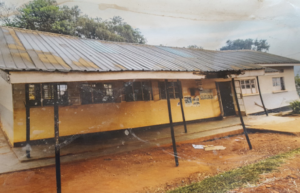

Post-Makeover
This is a continuous exercise, which involves a periodic review to ensure that the systems are working and the intended communities are utilizing the resources. Some of the activities conducted during post-makeover include but are not limited to:
- Conduct a post-makeover review meeting
- Document lessons learned
- Conduct regular supportive supervision
- Support quality improvement activities and engagements
- Use data to make decisions
Key Outcomes for the Clinic Makeover
- Increased uptake of family planning services at the facility
- Improved motivation for facility staff
- Improved ambiance and privacy for family planning service provision for both the clients and the service providers
- Improved utilization of other services at the clinic through integration
Monitoring Processes
This continuous process involves implementers conducting regular supportive supervision visits to the refurbished facility in order to support its functionality and ensure that all equipment and other installed items are kept in order.
Primary data sources and secondary data sources are consulted to ensure that the facility is being utilized. An improvement in the number of beneficiaries should be recorded. The four sites saw an increase in family planning uptake ranging from 8% to 91% in a period of three-months following the makeovers in Uganda.
Success Indicators
- Number of new family planning acceptors by method
- Number of family planning users at the facility
- Number of non-TCI geographies replicating the makeover approach
Cost
Cost elements include:
-
Labour costs
-
Procurement of FP equipment, commodities and furniture
-
Orientation of health workers on FP/AYSRH service delivery
-
Branding the facility
-
Printing of IEC material
-
Demand generation activities
-
Quality assurance visits
Sustainability
-
Include facility makeover in city budgets
-
Advocate for resources during budget planning cycles linking to positive health outcomes
In Their Own Words
 “With this beautiful space now, the health workers will feel safe and motivated to come to work every day and provide quality services to the beneficiaries. We pledge to maintain this facility and the equipment received to remain to the standard. The services in this health facility (Wakiso Health Centre IV) are going to improve and we thank TCI for this 72-hour makeover.”
“With this beautiful space now, the health workers will feel safe and motivated to come to work every day and provide quality services to the beneficiaries. We pledge to maintain this facility and the equipment received to remain to the standard. The services in this health facility (Wakiso Health Centre IV) are going to improve and we thank TCI for this 72-hour makeover.”
– Ms. Betty Naluyima, Deputy District Chairperson & Secretary for Health, Wakiso District, Uganda
TCI APP USERS PLEASE NOTE
You will only receive CERTIFICATES by email – when earning a score above 80% – and will not be able to view or print a certificate PDF from the TCI app.
Test Your Knowledge
Earn a Certificate
Quiz Summary
0 of 5 Questions completed
Questions:
Information
You have already completed the quiz before. Hence you can not start it again.
Quiz is loading…
You must sign in or sign up to start the quiz.
You must first complete the following:
Results
Results
0 of 5 Questions answered correctly
Your time:
Time has elapsed
You have reached 0 of 0 point(s), (0)
Earned Point(s): 0 of 0, (0)
0 Essay(s) Pending (Possible Point(s): 0)
Categories
- Not categorized 0%
- 1
- 2
- 3
- 4
- 5
- Current
- Review
- Answered
- Correct
- Incorrect
-
Question 1 of 5
1. Question
Facilities to upgrade are selected on:
CorrectIncorrect -
Question 2 of 5
2. Question
While the makeover occurs on a Saturday through Monday, it takes 3-5 weeks overall to conduct the approach depending on stakeholder availability.
CorrectIncorrect -
Question 3 of 5
3. Question
A clinic makeover is important because it:
CorrectIncorrect -
Question 4 of 5
4. Question
How useful did you find the information and/or tools presented on this page? Please write your response in the box below using one of the following phrases: Very useful, Useful, Somewhat useful, Not useful.
Feel free to comment on why you made that choice.
-
This response will be awarded full points automatically, but it can be reviewed and adjusted after submission.
Grading can be reviewed and adjusted.Grading can be reviewed and adjusted. -
-
Question 5 of 5
5. Question
How do you intend to use the information reviewed and/or tools that you accessed?
-
This response will be awarded full points automatically, but it can be reviewed and adjusted after submission.
Grading can be reviewed and adjusted.Grading can be reviewed and adjusted. -



